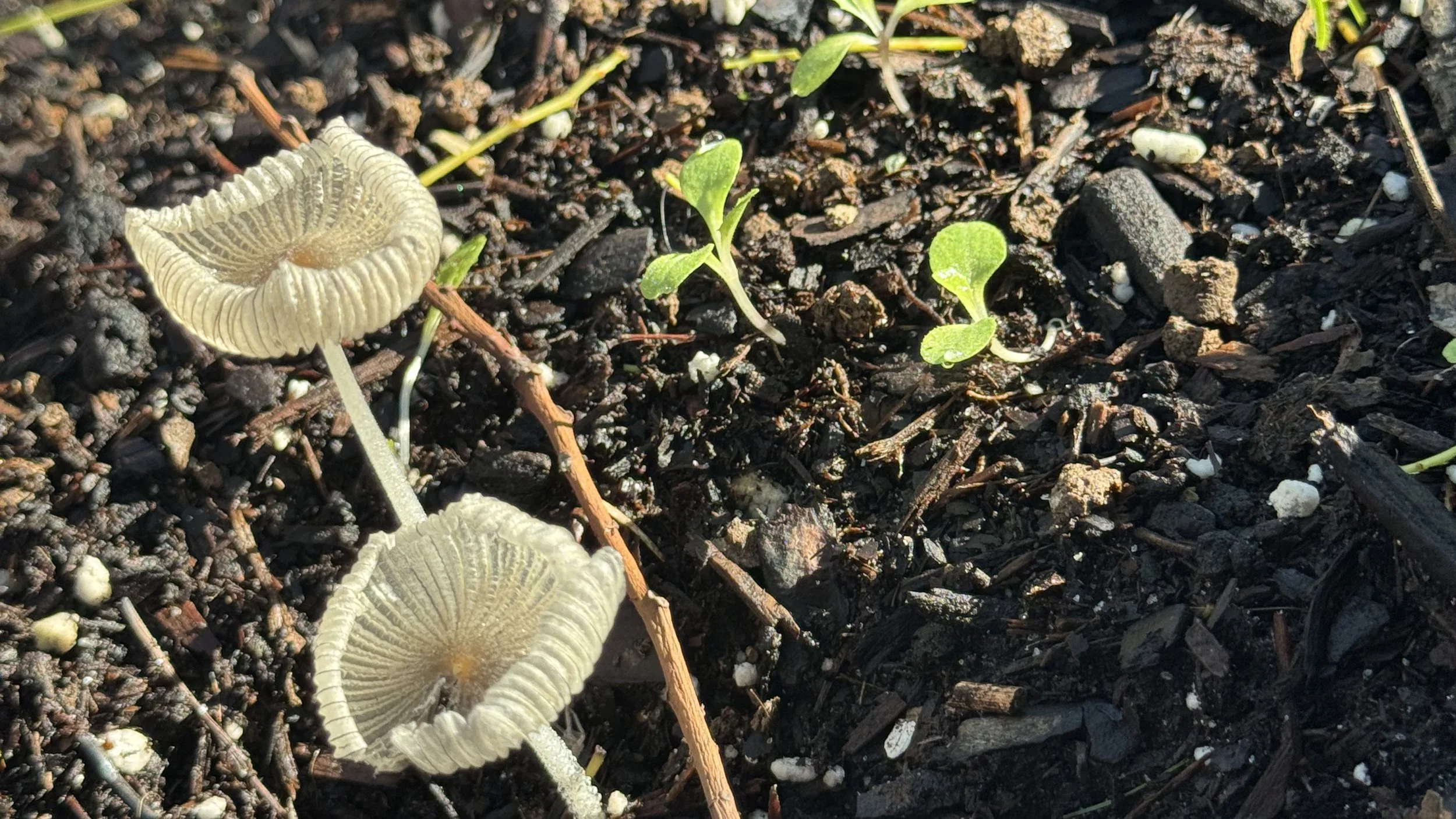Help! I have mushrooms in my garden!
Where did these mushrooms even come from?
Did you wake up one morning and find a bunch of mushrooms in your garden? Don’t worry. It’s actually a good thing!
But why, though?
Those tiny mushrooms are just the tip-tops of an underground fungus network (the mycelium) that's been quietly turning old leaves, mulch, and roots into plant food. After a good soaking and a spell of cool, shady weather, the mycelium soaks up the moisture it needs and blooms overnight. That's why you'll often spot clusters where you recently added mulch or compost. Their pop-up show is proof your soil is loaded with organic matter and nutrients on the move!
Most garden mushrooms are harmless saprophytes. They much prefer to dine on dead wood rather than your tomatoes. But, if their presence bothers you, just remove them from the surface and let the surface dry a bit more between waterings.
Why is it good?
Think of mushroom caps as your garden's way of giving you a big thumbs up. They're the fruit of helpful fungi that munch on old wood chips, leaves, and roots, turning all that debris into easy-to-use food for your plants. While they tunnel around, the fungi release a natural soil glue that sticks particles together into light, crumbly crumbs that are great for drainage, airflow, and locking carbon underground. Because their threads reach spots roots can't, the burst of nutrients that follows a mushroom flush lands right where plants need it.
Many of these same fungi partner up with living roots, acting like super long straws that sip up water and tricky to get minerals such as phosphorus, zinc, and copper. That partnership means sturdier growth and better drought resistance for most plants. Fungal highways can even crowd out certain soil pests and kickstart important plant defenses. Since the mushrooms are feeding on dead stuff (i.e., not your veggies or flowers!), leaving them where they are supports biodiversity and keeps your soil's quiet recycling crew working season after season!

